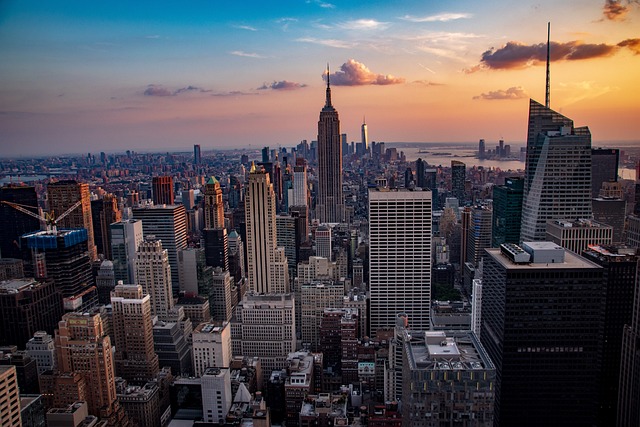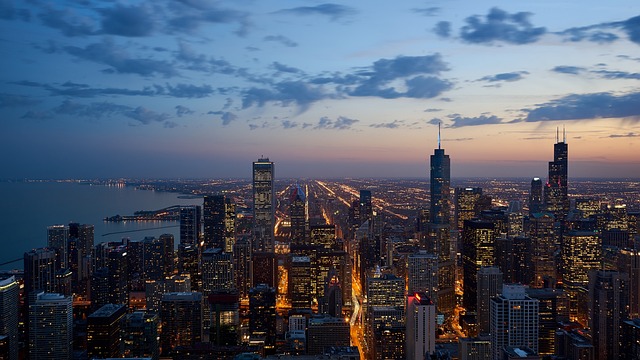The 50-foot American Flag exemplifies long-distance visibility in design, leveraging size, color contrast, reflectivity, and light scattering to draw attention from miles away. Its iconic status and vibrant colors make it a powerful tool for public events, fostering unity and national pride. Environmental factors like weather, terrain, and water significantly impact visual range, while incorporating reflective materials or lighting enhances its conspicuousness as a landmark. Beyond practicality, these flags carry significant cultural weight, serving as symbols of identity, heritage, and shared values that inspire strong emotional responses.
“Unveiling the power of long-distance visibility, this article explores how certain objects, like a striking 50-foot American Flag, capture attention from afar. We delve into the science behind visible ranges and why design elements matter. From environmental factors influencing visual clarity to practical applications in sports events and cultural celebrations, understanding long-distance visibility enhances our appreciation for iconic imagery. Discover the significance of size and strategic placement in making your message or symbol truly stand out.”
- Understanding the Concept of Long-Distance Visibility
- The Impact of Size: Why a 50-Foot Flag Stands Out
- Environmental Factors Affecting Visual Range
- Design Elements to Enhance Distance Visibility
- Practical Applications and Cultural Significance
Understanding the Concept of Long-Distance Visibility

The concept of long-distance visibility is a fascinating aspect of design and engineering, with a simple yet powerful goal: to make an object or structure visible from afar. This is particularly evident in iconic displays like the 50-foot American Flag, where clarity and size work in harmony to convey a powerful message even from great distances. Long-distance visibility goes beyond just seeing; it’s about ensuring that what you’re trying to communicate or mark is perceptible, understandable, and impactful regardless of how far away an observer might be.
Whether it’s a towering monument, a brightly colored sign, or even a simple traffic signal, the principle remains the same: maximize visibility to ensure effective communication. In practice, this involves careful consideration of factors like color contrast against the background, reflective properties, and the angle at which light reflects or scatters. For instance, a 50-foot American Flag, with its substantial size and vibrant red, white, and blue hues, leverages these principles to become a dominant feature in any landscape, visible for miles if properly positioned.
The Impact of Size: Why a 50-Foot Flag Stands Out

A 50-foot American Flag is a striking sight, easily visible from great distances, thanks to its impressive size. In an era where attention spans are shorter and visual stimuli abound, a large flag serves as a powerful and effective beacon. Its scale commands respect and draws the eye, making it an ideal symbol for national events, celebrations, and even as a marketing tool.
The impact of this size is twofold. Physically, a 50-foot flag is a monumental structure that can be seen for miles, easily outshining its surroundings. Emotionally, its presence evokes a sense of pride, unity, and patriotism. The sheer magnitude of the flag becomes an experience in itself, creating a lasting impression on viewers. Whether it’s flown during a patriotic holiday or as part of a community event, this colossal American Flag is sure to leave a mark on all who behold it.
Environmental Factors Affecting Visual Range

The visual range, or the distance at which an object can be seen clearly, is significantly influenced by environmental factors. One notable example is the iconic 50-foot American Flag—its size and color contrast make it visible from far away, even under varying weather conditions. Weather plays a crucial role; clear skies with minimal pollution allow for optimal visibility, enabling distant objects to be discerned with ease. In contrast, heavy fog or mist can drastically reduce visual range, making even prominent structures nearly invisible.
Terrain and topography also factor in. Objects on higher ground often stand out more due to their elevated position, providing a broader view for the observer. Conversely, uneven terrain or dense vegetation can act as barriers, obscuring distant features. Natural elements like bodies of water, while sometimes enhancing reflections and light play, can also refract and distort distant images, making them appear less clear.
Design Elements to Enhance Distance Visibility

When designing structures or elements intended to be visible from great distances, one of the most iconic and effective tools is the 50-foot American Flag. Its vibrant red, white, and blue stripes, coupled with stars, serve as a universal symbol of freedom and unity, making it highly noticeable even under varying weather conditions and at substantial distances. Incorporating such a flag into your design scheme not only enhances visual appeal but also ensures clear identification from afar.
To further boost distance visibility, consider using reflective materials or lighting elements integrated into the structure. High-visibility reflectors can bounce light back towards the observer, increasing the object’s prominence, especially during nighttime. Strategically placed lights or LED strips can also highlight specific features, ensuring that your design remains noticeable even in low-light conditions. These additional layers of visual cues work synergistically with a prominent 50-foot American Flag to create a visually striking and easily recognizable landmark.
Practical Applications and Cultural Significance

Practical Applications and Cultural Significance
The ability to display a visible symbol from great distances has numerous practical applications in modern society. One notable example is the 50-foot American Flag, which can be seen as a powerful tool for public gatherings and national events. These massive flags serve as focal points during parades, celebrations, and commemorations, fostering a sense of unity and patriotism among viewers. Their size ensures that they catch the eye from far away, making them ideal for drawing crowds and creating memorable experiences.
Beyond practical uses, visible symbols like the 50-foot American Flag hold significant cultural weight. They often become iconic representations of identity, heritage, and shared values. In public spaces, these displays can inspire national pride, spark conversations about history and civic duty, and even play a role in shaping societal discourse. The sight of such a large flag can evoke strong emotions, reminding individuals of their roots, freedoms, and the collective spirit that binds communities together.
